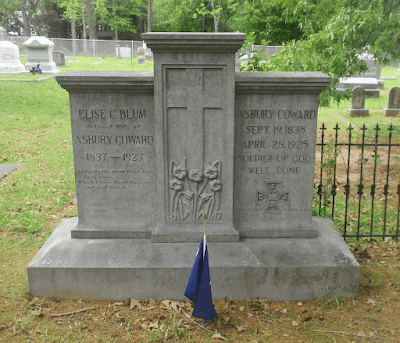 |
South Carolina Patriot militiaman.
Artwork by Dan Nance (2014). |
Edward Lacey Jr. was born on Monday, September 13, 1742 in Shippen Township, Cumberland County, Pennsylvania, the son of Edward Lacey Sr., a native of England who'd settled on the Chesapeake Bay and then later moved to Cumberland County.
Young Edward did not get along well with his father, who largely disapproved of his adventurous spirit and a childish infatuation for
military life.
Lacey was just 13 years old when the French and Indian War (1754 - 1763) broke out and he ran away to join British Major General
Edward Braddock in his disastrous expedition against the French-occupied Ohio River Valley and Fort Duquesne (modern-day Pittsburgh, Pennsylvania) in 1755.
As he was too young to bear arms, Lacey served as a pack-horse rider and wagon driver on the Braddock expedition along with then 20 year-old future explorer Daniel Boone. He was a member of the American militia forces on the 1,300 man expedition commanded by then 23 year old Colonel George Washington.
Lacey received his very first bitter taste of battle on Sunday, July 9, 1755 at the Battle of the Monongahela (near modern-day Braddock, Pennsylvania) when Braddock's British and American forces were attacked by French and First Nations Indian forces after crossing the Monongahela River and the grueling retreat after Braddock himself was mortally wounded and died.
Young Edward Lacey endured the terrifying three hours of the battle surrounded by howling French and Indian enemies firing at the columns of redcoats from the woods surrounding the road. He was also a witness to General Braddock being shot from his horse, and Washington taking charge and leading the shattered column in retreat. Lacey helped drive a wagon full of wounded British and American provincials, which he helped tend to along the journey.
After two years of service as a pack-horse driver with the British army, his father
found him and brought him home against his wishes. He remained there for a year and then, at age 16, Lacey
again ran away to accompany Scottish immigrants Baron William Adair and his wife, Mary Moore Adair, joining the exodus of Scots-Irish immigrants
to the Carolinas down the Great Wagon Road.
Baron Adair's son, John Adair, would be a life-long friend of Edward, later serving under him in his militia company during the Revolutionary War, and would survive the war to become a delegate to the South Carolina convention to ratify the U.S. Constitution, and then later on become Governor of Kentucky.
They settled in the southern portion of the New Acquisition's District Between The
Broad and Catawba Rivers (later becoming York and Chester Counties). From William Adair, the
lad received an excellent education as he served as an apprentice bricklayer.
According to family legend, when he was still a young
man, Lacey went to Charleston, South Carolina to sell
bees wax and hides. He visited a gypsy woman to get his fortune
told. The woman told Lacey that he would become a great warrior
and never
shed any blood in battle, but that he would die by drowning. She
also
told him that he would marry a red-headed woman and have ten
children, five with red hair and five who would be dark.
His father would eventually move to South Carolina with
his son, settling in the New Acquisitions District (modern-day York
County) along with the rest of his family. The two would make peace again for a time, but partisan politics would soon divide them yet again.
In the 1760s, the Laceys obtained several large land
grants along Turkey and Fishing Creeks. Lacey himself built a farm along
Sandy River in modern-day Chester County. Lacey married a redheaded woman, Miss Jane
Harper of Chester District in 1766 and the couple would go on to have eleven children.
In
person, Colonel Edward Lacey was an imposing figure. Reportedly, he was five
feet eleven inches tall, weighed about 170 pounds, had black hair, dark eyes,
and an unusually handsome and strongly intellectual face.
When the American Revolutionary War broke out in 1775, young Edward, a staunch Whig, took sides with the Patriot cause, becoming a captain in the local Turkey Creek Volunteer Militia company. Lacey
used his own money in the war and he was never paid for his services.
His father,
Edward Lacey Sr., remained an uncompromising British Loyalist (Tory) -- a fact which would come into play at the height of the American Revolutionary War's Southern Campaign in South Carolina's backcountry.
Captain Lacey's company served in Brigadier General Andrew Williamson's 1776 campaign during the Cherokee War. When the news of the Declaration of Independence reached his company he publicly read
the patriotic document to the army.
Lacey would serve in various engagements over the next few years, including the Battle of Stono Ferry (Sunday, June 20, 1779) where his militia would fight with Major General Benjamin Lincoln against British and Hessian troops as they retreat from an aborted attempt to capture Charleston.
In 1780 he received his commission
as colonel of militia for the Chester District. Him and his militia were on their way to help defend Charleston, before learning that the city fell to the British under General Sir Henry Clinton after a nearly two month siege on Friday, May 12th. They returned home, many of them content with sitting out the rest of the war, until it became apparent that the local Loyalists and the British were out for revenge.
During the late spring and summer of that year, British occupiers offered Lacey wealth and
position to serve as a spy for the Loyalists, but he preferred to remain loyal
to his Patriot neighbors.
Edward Lacey was also likely one of the 32 Patriot volunteers who took part in the engagement at Alexander's Old Fields in Chester District on Wednesday, June 7th and at Mobley's Meeting House in modern-day Fairfield County the next day on Thursday, June 8th when Colonel William Bratton of the New Acquisitions militia and Captain Richard Winn routed Loyalists attempting to recruit in the area. Both actions served as the first Patriot acts of defiance to British authority in the South Carolina backcountry.
Six weeks later, on July 12, 1780, Colonel Lacey and his militia took part in the decisive Battle of Williamson Plantation (better known locally as the Battle of Huck's Defeat) where Patriot militia defeated Loyalist militia and Provincials -- including members of Lieutenant Colonel Banastre Tarleton's dreaded British Legion under the notorious Captain Christian Huck.
An interest side note to this battle, the night before Edward Lacey was forced to tie
his Loyalist father to his huge four-poster bed to keep him from warning
Huck the night before during the preparing for the fighting the next morning.
Colonel Lacey continued to serve throughout the summer of 1780 with General Thomas "Gamecock" Sumter at the Battles of Rocky Mount (Tuesday, August 1st), Hanging Rock (Sunday, August 6th), Carey's Fort (Tuesday, August 15th), and at Fishing Creek (Friday, August 18th).
Throughout
his service in the Southern Campaign of the
American Revolutionary War, Lacey would go on to fight in sixteen
battles and engagements, never once being wounded. The closest he came
was at the Battle of Kings Mountain (Saturday, October 7th) when a
musket ball
passed through his hat and cut the hair at the top of his head, but
didn't touch him. He also has his horse shot out from under him that
same afternoon.
Later that fall, Lacey and his militia would again serve under Sumter at the Battles of Fishdam Ford (Thursday, November 9th) and Blackstock's Farm (Monday, November 20th) where his militia would once again face and defeat the British Legion, this time under the command of Tarleton himself.
Lacey's last major military action took place at the Battle of Eutaw Springs (Saturday, September 8, 1781) where he served under Major General Nathaniel Greene and Colonel William Washington in the final campaign against the British in the Carolinas.
In 1782 he was sent to Edisto Island, South Carolina remaining on duty until December of that year. The American Revolutionary War formally less than a year later.
Soon after the end of the war, he was awarded the rank of Brigadier General in the militia for his service, and became one of the first county court judges in Chester District. He was sent to the General Assembly of South Carolina in Charleston, where he served Chester County in the State Legislature until 1793.
In
October 1797 General Lacey moved his family west to Montgomery County, Tennessee, then the farthest frontier, to
the west of Nashville where they remained for two years. The family then
moved again permanently moved to Livingston County, Kentucky, near the Ohio River in 1799
where Lacey soon became a county judge.
On Saturday, March 20, 1813, while crossing the flooded Deer Creek near Carrsville, Kentucky on horseback, Lacey was struck by a catalepsy seizure and fell from his horse, drowning in the rushing water -- just as the gypsy fortuneteller had allegedly foretold. He was 70 years old.
General Edward Lacey's widow, Jane, soon followed her husband to death two months later. Both are buried next to each other in the Carrsville Cemetery in Livingston County, Kentucky, USA.
Sources used for this article include the following:
The Road to Guilford Courthouse by John Buchanan, 1997, John Wiley and Sons, New York.Nothing but Blood and Slaughter
- the Revolutionary War in the Carolinas, Volume Four, 1782 by
Patrick O'Kelley, 2005.
The Day It Rained Militia: Huck's Defeat and the Revolution in the South Carolina Backcounty May - July 1780 by Michael C. Scoggins, 2005.
And a special thanks to the good folks at the Chester County (SC) Historical Society.























